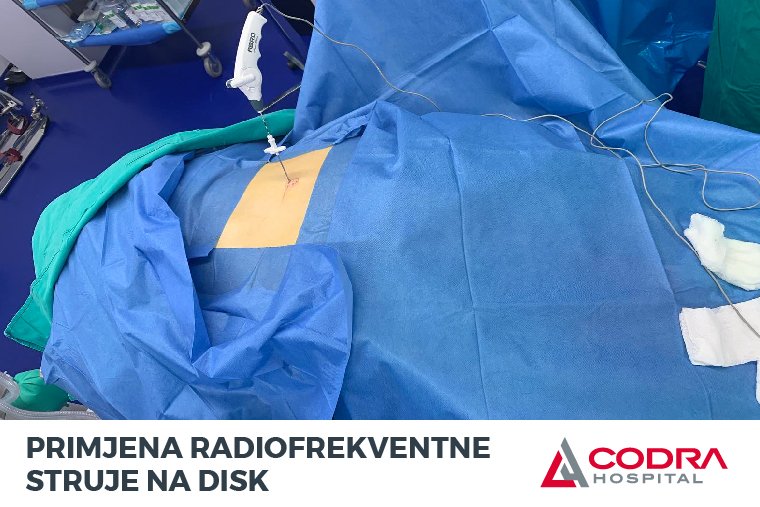Disc herniation is the result of degenerative changes that lead to wear or damage to one or more discs. Displacement of the intervertebral disc into the spinal canal often leads to pinching and inflammation of the nerve with severe pain in the neck or back that often spreads down the arm or leg. The patient may also feel muscle weakness, tingling in the arms or legs and the lower part of the spine.
Minimally invasive techniques for the treatment of disc herniation and other degenerative diseases of the spine include techniques that, with minimal tissue trauma, achieve the maximum effect.
The diagnosis is established based on an X-ray image, a scanner image and a clinical examination. When conservative therapy does not provide satisfactory results, a neurosurgeon is consulted in order to determine whether there is an indication for one of the surgical treatment methods (such as endoscopic or microscopic spine surgery) or for one of the minimally invasive methods (PRDD).
- PRDD – percutaneous radiofrequency disc decompression is a minimally invasive technique which solves the discus herniation problem without a surgical incision, with radiofrequency current under local anesthesia. This modern procedure has many advantages:
- It is done under local anesthesia
- Fifteen minutes procedure
- Tissue trauma and bleeding are minimal
- No scars
- Quick removal of the pain
- Short recovery process
- The patient can go home one hour after the intervention
Prior to the surgery it is necessary to determine the exact location of the prolapse i.e. the location where the cartilage tissue exited the spinal canal and pinched the root of a nerve in the spinal column.
Most frequently, patients suffer from pain in the lower back, which is caused by prolapse at the level of lumbar vertebrae L4-L5 and/or L5-S1. An X-ray, scanner or MRI provides accurate localization.
The procedure begins with administering local anesthesia. Then a probe that conducts radiofrequency current is passed through the hole in the skin. The energy released by the radio frequency current is applied to the disc, so that it shrinks and the pinched nerve is relieved of pressure (decompression process).
At the CODRA Hospital all types of procedures and minimally invasive treatment techniques for disc herniation and other degenerative diseases of the spine are performed by Dr. Sci. Med. Nenad Živković, specialist in neurosurgery, spinal surgeon and scientific associate, with the view to implement new global trends in the treatment of spinal pathology in Montenegro, which he largely mastered and perfected by working with some of the world’s best experts in this field. Dr. sci. Med. Nenad Živković has over 50 published scientific papers in the field of neurosurgery, as well as two books, one of which was published in Germany.


